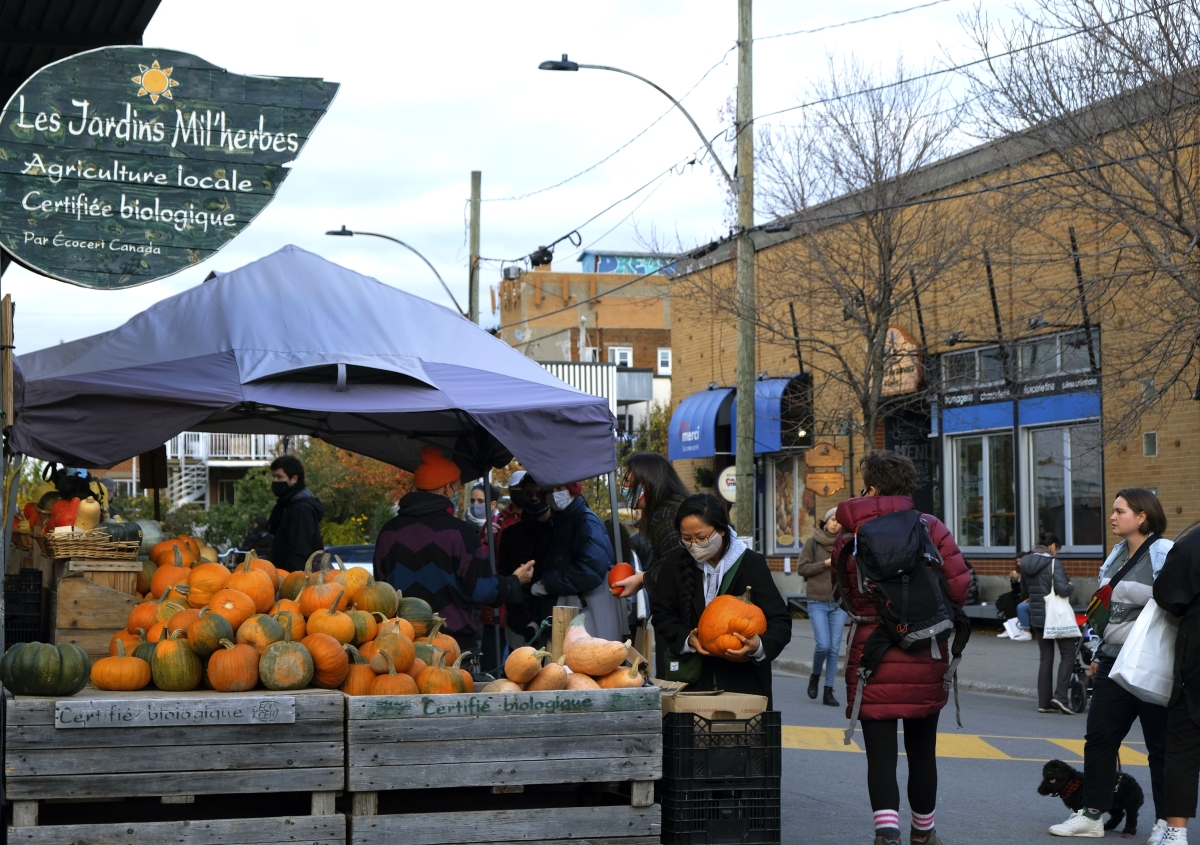Every year in early October grocery stores across Montreal, much like the rest of North America, place large bins full of bright orange pumpkins outside their shops, and every year customers buy them all up. The market for pumpkins and pumpkin-related activities, like hayrides and farm visits, has grown in recent decades. In 2001, Canada planted 5,700 hectares of pumpkins, squash, and zucchini; by 2017, there were more than 6,400 hectares of land growing these fall staples. Come Nov. 1, however, consumers are frequently left with rotting pumpkins in dire need of disposal.
Simply tossing a pumpkin in the garbage can have negative consequences on the environment. The addition of food waste to municipal solid waste (MSW) leads to anaerobic decomposition in landfills. Anaerobic decomposition occurs when organic materials break down in environments without oxygen—the bottom of a landfill, for example—producing methane gas along with carbon dioxide and water vapour. Methane is a greenhouse gas that is about 28 times more potent than carbon dioxide in accelerating climate change, and 20 per cent of Canada’s methane emissions come from its landfills.
There are, however, ways to keep pumpkin husks out of landfills. The first is, hopefully, the most obvious: Eat the gourd. Pumpkins that have not yet started to rot are still perfectly edible. These squash contain a wide range of essential nutrients, including vitamins A and C, potassium, and iron. There are a variety of flavourful options for preparing this delicious autumn vegetable. Try making a wholesome and warming pumpkin soup, or roast your cucurbit with other vegetables for a delicious side that is easy to keep in the fridge for later.
In the weeks leading up to Halloween, many people may have left their carved pumpkins outside as decoration, where exposure to the elements and Montreal’s squirrels are likely to make the pumpkin significantly less appealing to eat. Pumpkin decorations are an autumnal mainstay, but that does not mean the whole vegetable has to go to waste. When scooping out the stringy innards of a pumpkin to carve a spooky face in the side, save the seeds for later. Separate the seeds from the tissues and wash them off before drying. Then, toss the seeds with seasoning of your choice and roast them for a tasty harvest season snack.
Eating as much of the pumpkin as possible should be the first step in keeping them out of landfills, but if molten pumpkin carcasses are still left over on doorsteps, eating that rotten flesh becomes a deeply unpleasant thought. This is not an excuse to throw those sad, orange racoon snacks in the garbage. Make sure to compost these pumpkin remains, either through Montreal’s municipal compost collection service or in an at-home compost heap. Checking neighbourhood specific compost collection instructions and days is simple and can help keep food waste out of landfills, reducing greenhouse gas emissions from MSW.
Every year, the average Canadian household loses $1,100 in food waste. Planning meals––and edible decoration use––in advance can help individuals save money and ensure nutritious vegetables like pumpkins do not end up contributing to the ongoing climate crisis. Participating in fun holiday traditions, such as pumpkin carving, is still possible without the mindless consumption and waste that the commercialized versions of holidays often promote. A little extra planning and effort can make this Halloween special and memorable, especially with parties and spooky social gatherings off the table this year.









